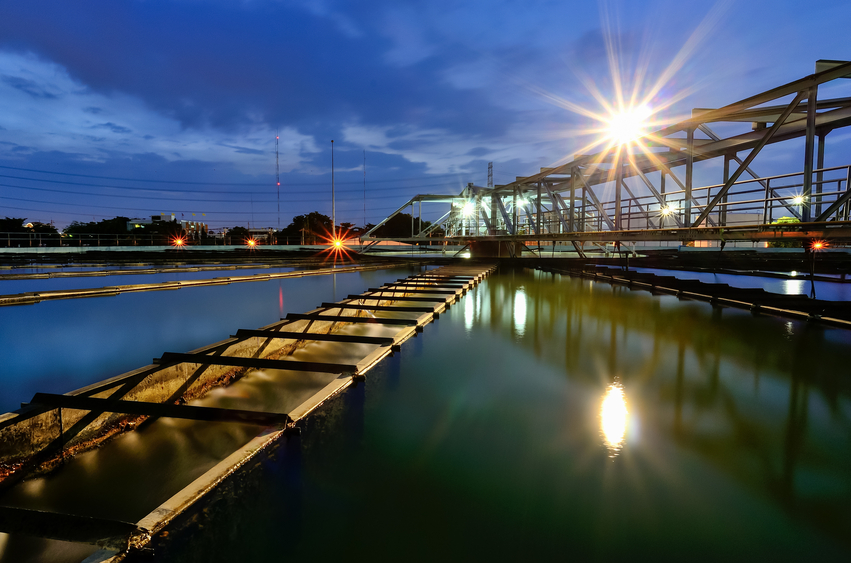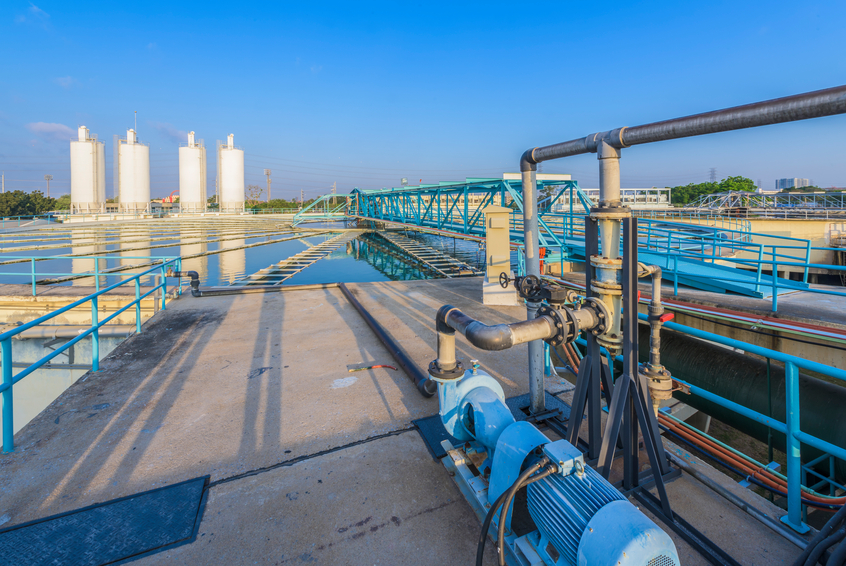Wastewater Engineering 15 PDH Discount Package 2
Courses in this Package
Membrane Bioreactors (MBR) for Water Reclamation (C07-003)
UV Disinfection Options for Wastewater Treatment Plants (C08-006)

This online engineering PDH study provides the student with information on MBR design and operation and information about four leading MBR equipment manufacturers.
The use of membrane bioreactor (MBR) technology, which combines conventional activated sludge treatment with low pressure membrane filtration, has been proven to be a feasible and efficient method of producing reclaimed water. The membrane component of the MBR process eliminates the need for a clarifier and is performed using low-pressure membranes such as microfiltration (MF) or ultrafiltration (UF). MBR technology offers several advantages to conventional wastewater treatment including reduced footprint, consistent and superior effluent water quality and ease of operation.
A pilot study was conducted by the US Bureau of Reclamation to evaluate the MBR technology for its potential application to water reclamation. The main purpose of the study was to evaluate several leading manufacturers in an effort to encourage competition within the MBR industry. In addition, the study focused on optimizing MBR operation for water reclamation. The study included a parallel comparison of four leading MBR suppliers.
This 7 PDH online course is intended for engineers, state regulators, and water treatment professional. It provides information on MBR design, operation, and costs. It will also assist those professionals that work in the area of upgrading and expansions of existing water and wastewater facilities or the design of new facilities. The course is suitable for a student with basic water treatment knowledge or for an advanced student that needs to brush up on water treatment basics.
This PE continuing education course is intended to provide you with the following specific knowledge and skills:
- General requirements of the USEPA Clean Water Act
- MBR performance evaluations
- Knowledge of MBR technology and equipment
- Wastewater treatment and MBR design criteria
- O&M requirements and costs of MBR systems
- Support information for determining MBR applications
In this professional engineering CEU course you will need to review the Department of Interior, "Optimization of Various MBR Systems for Water Reclamation, Phase III, Final Technical Report", as well as "Appendix A" to this report.
Once you complete your course review, you need to take a multiple-choice quiz consisting of thirty five (35) questions to earn 7 PDH credits. Twenty five (25) of the thirty five (35) questions will be based on the main DOI document. The final ten (10) questions will be based on Appendix A involving economics and visual identification of the different membrane units.
Upon successful completion of the quiz, print your Certificate of Completion instantly. (Note: if you are paying by check or money order, you will be able to print it after we receive your payment.) For your convenience, we will also email it to you. Please note that you can log in to your account at any time to access and print your Certificate of Completion.

This online engineering PDH course will provide a detailed evaluation of ultra violet (UV) technology as an alternative to conventional chemical disinfection methods used at wastewater treatment plants (WWTP).
Chlorination has been the preferred disinfection method used for treating WWTP effluent, but concerns about chemical releases, public safety, and the potential for chlorinated effluent to be toxic to aquatic life have caused municipal managers to consider other options. Although chlorine, sometimes followed by dechlorination, continues to be used at many municipal WWTPs, use of other means, such as UV disinfection, is increasing. UV is a technology capable of providing effective WWTP effluent disinfection while reducing safety and environmental toxicity issues.
There are many factors that must be carefully considered to verify that UV facilities are safe, reliable and economical. These issues include the cost of power and lamp replacement, lamp fouling, ability of the water to allow transmission of UV radiation, tailing, photoreactivation and regrowth of disinfected microorganisms, and dose selection.
This 8 PDH online course is intended for wastewater treatment engineers and environmental professionals seeking to gain an understanding of UV disinfection technologies. This course is also an excellent overview for those environmental professionals working in the field of water and wastewater treatment. A complete description of UV science is described along with its application to the disinfection of wastewater. The three major UV technology options are fully presented and compared. Results of a pilot demonstration are looked at to give the reader a real world example for evaluating UV technologies as an option for disinfecting wastewater at an existing plant.
This PE continuing education course is intended to provide you with the following specific knowledge and skills:
- General requirements of the USEPA Clean Water Act
- UV science
- Current UV disinfection technologies used in wastewater treatment
- Variations of alternative lamps and UV equipment
- Design and dose requirements of UV systems
- O&M requirements and costs of UV systems
- Support information for determining UV disinfection options
In this professional engineering CEU course, you need to review the NYSERDA Publication, "Evaluation of Ultraviolet (UV) Radiation Disinfection Technologies for Wastewater Treatment Plant Effluent".
Upon successful completion of the quiz, print your Certificate of Completion instantly. (Note: if you are paying by check or money order, you will be able to print it after we receive your payment.) For your convenience, we will also email it to you. Please note that you can log in to your account at any time to access and print your Certificate of Completion.